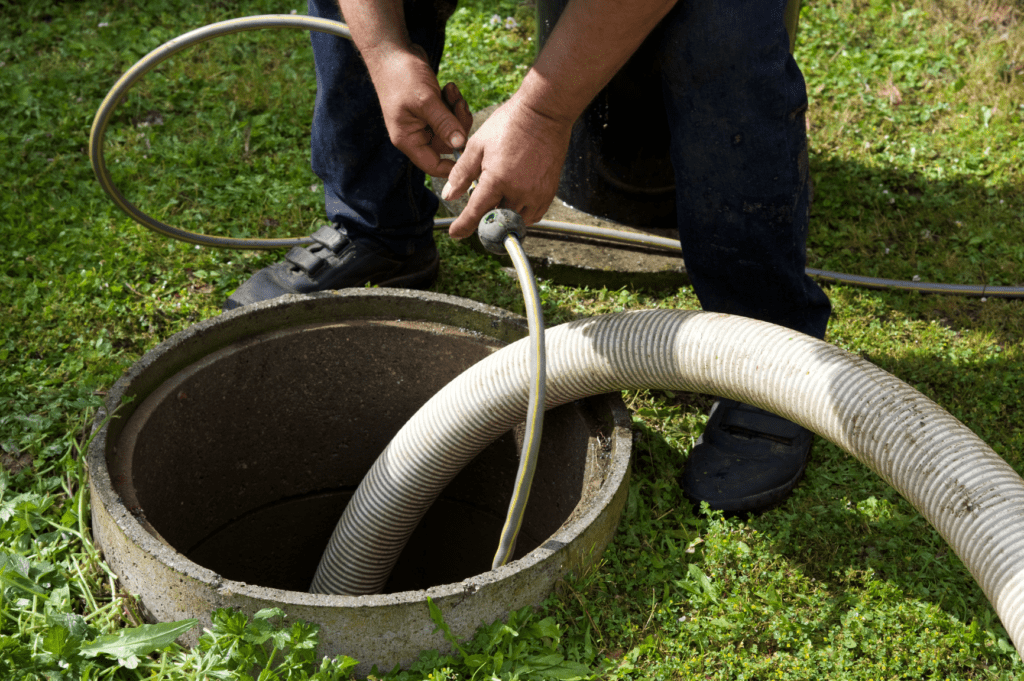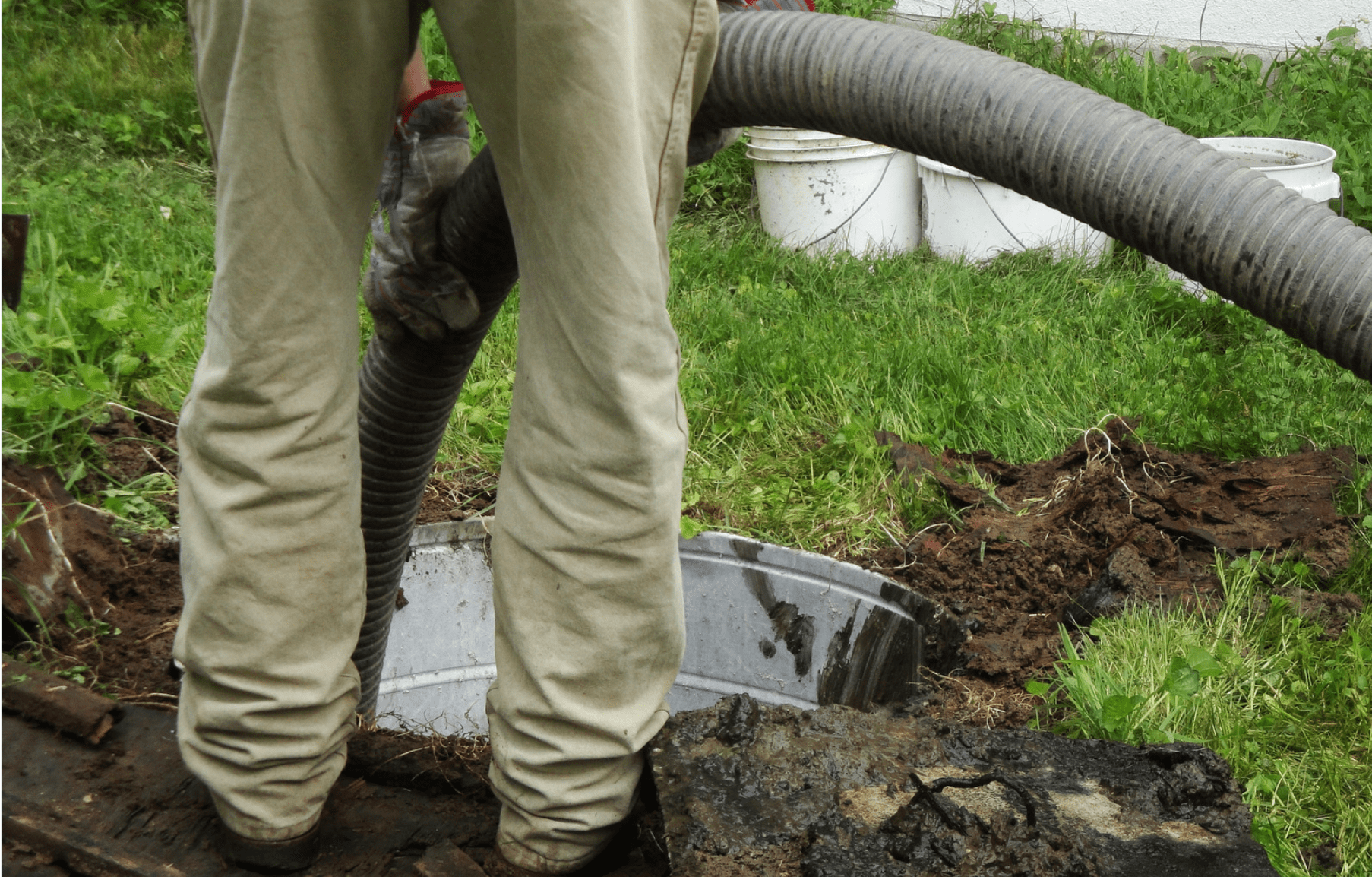Keeping your septic tank in tip-top shape is very important. If it overflows, or mess with the water drainage, you’re looking at expensive repairs, environmental damage, and health risks.
But here’s a question: is it okay to pump septic tanks in winter? Winter can throw a few curveballs, like frozen ground and snow.
Well, that’s exactly what we’re diving into in this blog post. We’re going to unpack all the ins and outs of pumping septic tanks during winter.
If you’ve ever scratched your head about this, stick around!
Pumping Septic Tanks in Winter: What’s the Big Deal?

Pumping your septic tank is pretty straightforward, right? Well, add a bit of winter into the mix, and things get a tad more complicated.
Cold weather and snow can throw a wrench in the works. Let’s dig into this a bit more.
Why Winter Makes Pumping a Tough Gig
Winter is pretty challenging for pumping septic tanks. Why? One word: cold. Freezing temperatures can turn the ground into an icy fortress.
Trying to get to your septic tank can become an ice-breaking mission, leading to delays and a whole lot of headaches.
The Winter Woes: Frozen Ground and Snow
Frozen ground and snow are the main culprits here. If the ground’s frozen, finding and reaching your septic tank can become a real pain.
This is even worse if you haven’t marked your tank location. Trying to dig into frozen ground? That’s a tough workout.
Then there’s the snow. It might look pretty, but a heavy snowfall can hide your septic tank like a white, fluffy blanket.
Plus, snow can act like insulation, making the ground underneath harder to dig into.
How Winter Can Throw a Wrench in Your Pumping Plans
All these winter conditions can mess with your septic tank pumping plans. If it’s hard to find or reach your tank, the pumping process can take longer and require more elbow grease.
In some cases, if the ground is too frozen, you might not be able to pump at all.
And let’s not forget about potential damage. Trying to dig into frozen ground could harm your tank or its pipes.
So, can you pump your septic tank in winter? Sure, but it’s not a walk in the park. You’ll need to be prepared for these challenges.
Don’t worry, though. We’re going to talk about the upsides, how to successfully pump in winter and what other options you have if it’s just too darn cold. Stay tuned!
Pumping Your Septic Tank in Winter: The Upsides

Sure, winter might throw some curveballs when it comes to pumping your septic tank. But believe it or not, there are some perks too! Let’s check them out.
Enjoy Quick Service Thanks to Lower Demand
Winter tends to be a quiet time for septic service providers. Why? Most people like to schedule maintenance tasks when it’s warm.
So, there’s usually less demand. This can mean faster service and more flexible scheduling for you. And with fewer jobs on the go, your service provider can give your tank the TLC it deserves.
Bag a Bargain with Off-Peak Pricing
Since business is typically slow in winter, some service providers might offer lower prices to attract customers. It’s not a sure thing, but it’s worth asking about when you book your pumping service.
Less Water Use, Less Strain on the System
Winter often means less water usage in many homes, especially if outdoor activities are off the table due to the cold weather.
No watering the garden, fewer loads of laundry, and less car washing all lead to less water going into your septic system.
This can mean less strain on your tank and a lower risk of overloading it right after pumping.
So, while winter does have its challenges for pumping your septic tank, it’s not all bad. It’s about weighing up the good and the bad, understanding your tank’s specific needs, and planning wisely.
Up next, we’ll share some handy tips for pumping your tank successfully in winter. Stick with us!
How to Successfully Pump a Septic Tank in Winter
Ready to pump your septic tank this winter? Yes, it’s challenging but hey, with some good planning and prep, you’ve got this!
Here’s a step-by-step guide on how to prepare your tank for a winter pumping, finding a trusty service provider, and taking care of your system post-pumping.
Prepping Your Septic Tank for Winter Pumping
First up, let’s insulate your septic tank. Layer it with mulch, straw, or a septic tank insulating blanket.
This stops the ground around the tank from freezing and makes it easier to get to when it’s time for pumping.
Next, keep a handy record of your septic system. You need a map pinpointing your tank, drain field, and all related pipes.
This helps you or the pros you hire find the tank fast, saving you time and effort.
Locating and Marking the Tank Before the Ground Freezes
Don’t forget to locate and mark your septic tank before the ground freezes. Frozen ground is tough to dig into and snow can hide the tank’s location.
Knowing exactly where to dig makes the pumping process quicker and less tiring. Use tall flags or stakes that can be seen even if it snows.
Choosing a Trustworthy Septic Tank Service Provider
Finding a dependable septic tank service provider is key for successful winter pumping. Look for a company with experience in winter pumping and familiar with potential challenges.
Read online reviews, ask for recommendations, and question potential providers about their winter experience.
Post-Pumping Care in Winter Conditions
Once your septic tank is pumped, there are a few things to do to keep it working well for the rest of winter:
Keep Insulating: Don’t remove the insulation. It helps stop the freshly emptied tank from freezing.
Limit Water Use: Even though your tank’s empty, try to use less water to stop it from filling up too quickly. This is super important if there’s extreme cold after the pumping.
Stay Off the Drain Field: Avoid driving or parking on the drain field, especially in winter when the ground may be softer and easier to damage.
By following these tips and steps, you’re all set to successfully pump your septic tank this winter. This ensures a smooth waste management system for your home, even in the frostiest months.
What Determines When to Pump Your Septic Tank?
When it comes to taking care of your septic tank, there’s no one-size-fits-all solution. Different factors will influence how often you need to pump it. Let’s dive into some of these.
How Big Is Your Tank?
Think about it. A larger tank can hold more solid waste. So, generally, it won’t need pumping as often as a smaller one.
For example, a 1,000-gallon tank might only need a cleanout every 3-5 years. But a 500-gallon tank? It might need servicing more often.
How Many People Are Using the System?
Here’s another thing to consider: the number of people in your house. More people mean more waste and wastewater.
This means your septic tank fills up faster. A six-person family will generate way more waste than a two-person household. So, the more people, the more pumping is needed.
How Much Solid Waste Is There?
The type and amount of solid waste in your wastewater can affect how quickly the sludge layer builds up.
If your household generates a lot of solids, or if the waste has lots of hard-to-break-down materials, you might need to pump your tank more frequently.
Got Any Non-Biodegradable Waste?
Your septic tank’s bacteria love breaking down organic waste. But non-biodegradable items? Not so much.
So, flushing things like diapers, plastic, cigarette butts, or non-biodegradable wipes can quickly fill up your tank. This could cause clogs or other serious problems.
If your tank has a lot of this type of waste, you’ll need to pump it more often.
Remember, these are general guidelines. Your septic system’s needs might be different. So, get in touch with a septic service professional. They can check out your specific situation and give you the best advice.
Conclusion
While winter conditions can pose unique challenges to septic tank pumping, it is indeed feasible. Factors such as frozen ground and snow can complicate the process, increasing the risk of delays, difficulties in locating the tank, and even potential damage.
However, these challenges can be mitigated through careful planning and preparation, including insulating the septic tank, accurately mapping out the system, and marking the tank before the ground freezes.
Winter pumping also comes with advantages like faster service due to lower demand, potential off-peak pricing, and less strain on the system due to reduced water usage.
Thus, with the right preparations and a trustworthy service provider, septic tank pumping can be successfully carried out in winter.

